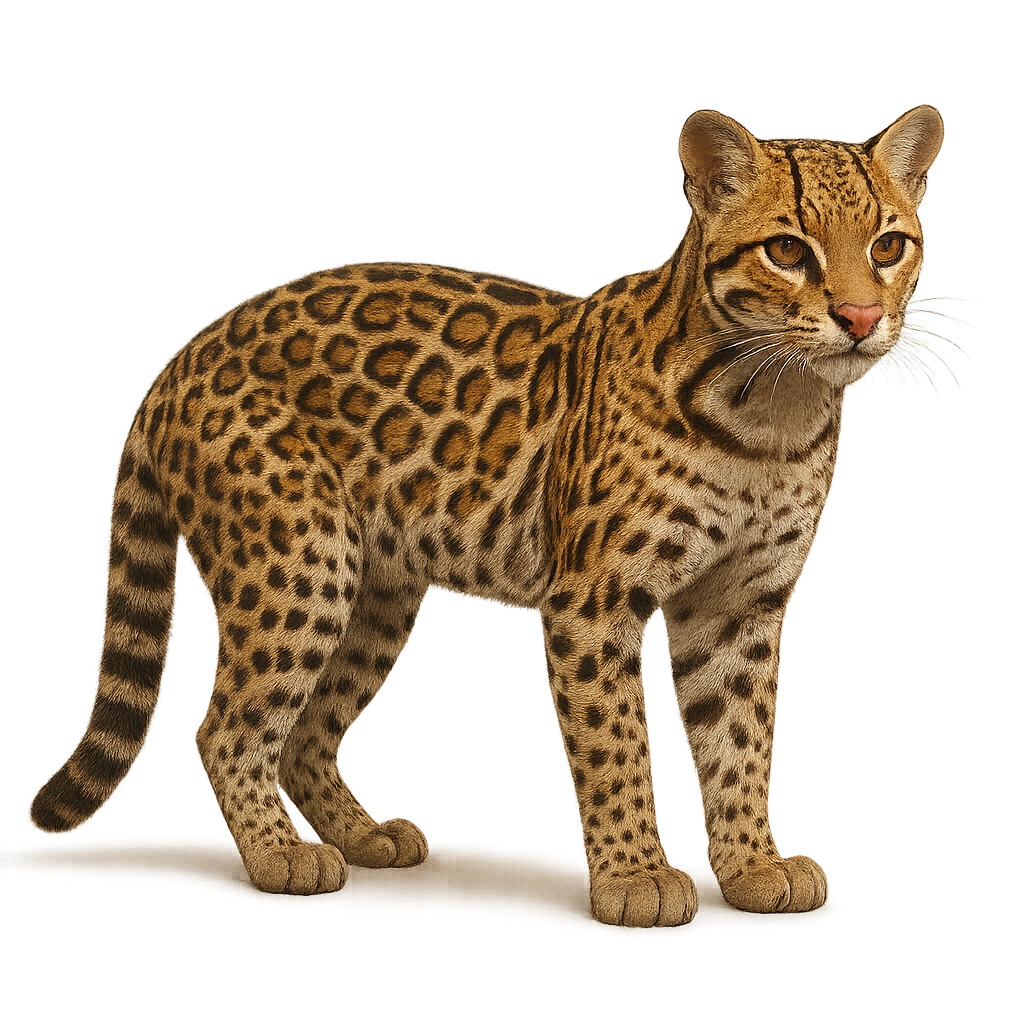Your wildlife photography guide.
Explore the ocelot in detail, study its behavior, prepare your shots.
Where to observe and photograph the ocelot in the wild
Learn where and when to spot the ocelot in the wild, how to identify the species based on distinctive features, and what natural environments it inhabits. The WildlifePhotographer app offers tailored photography tips that reflect the ocelot’s behavior, helping you capture better wildlife images. Explore the full species profile for key information including description, habitat, active periods, and approach techniques.
Ocelot
Scientific name: Leopardus pardalis

IUCN Status: Least Concern
Family: FELIDAE
Group: Mammals
Sensitivity to human approach: Tolerant
Minimum approach distance: 30 m
Rut period: December to January
Gestation: 79-85 jours
Births: February to March
Habitat:
Tropical and subtropical forests, savannas, and woodlands of Central and South America
Activity period :
Mainly active at night, generally discreet during the day.
Identification and description:
The Ocelot is a medium-sized wild cat, measuring between 55 and 100 cm in length (excluding the tail) and weighing between 8 and 16 kg. It is distinguished by its spotted and striped coat, which helps it blend effectively into dense forests and wooded areas where it lives. Its fur is generally golden or grayish, with black marks in the form of spots or rosettes across the body. The Ocelot is a nocturnal and solitary hunter, primarily feeding on small mammals, birds, reptiles, and fish. It is agile and fast, capable of climbing trees to hunt or escape predators. This cat is primarily found in Central and South America, in tropical forests, savannas, and mountainous areas. While its population remains stable in some regions, the Ocelot is threatened by deforestation, illegal hunting, and habitat loss.
Recommended lens:
200 mm – adjust based on distance, desired framing (portrait or habitat), and approach conditions.
Photography tips:
To photograph an ocelot, it is ideal to be discreet and use a telephoto lens to capture its movements in the shadows. Natural lighting is preferable to avoid frightening them, but soft lighting can be used during their nocturnal outings. Prefer dusk photography, when the animal is active, but be careful not to disturb its habitat.
The WildlifePhotographer App is coming soon!
Be the first to explore the best nature spots, track rutting seasons, log your observations, and observe more wildlife.
Already 1 430 wildlife lovers subscribed worldwide

